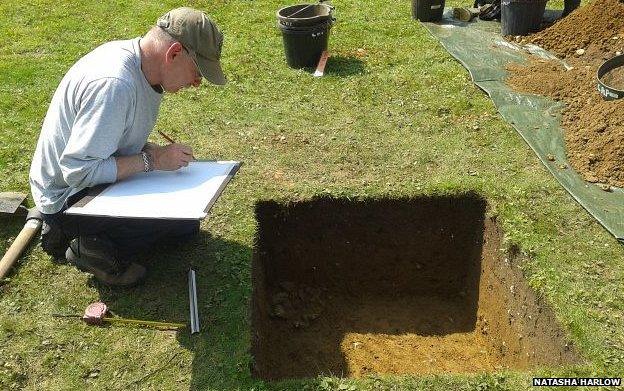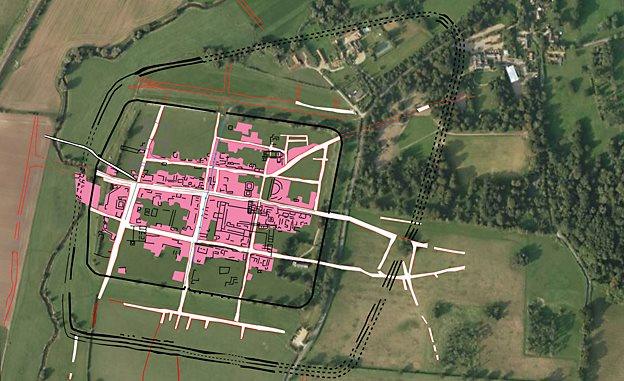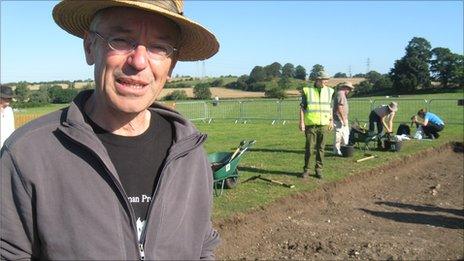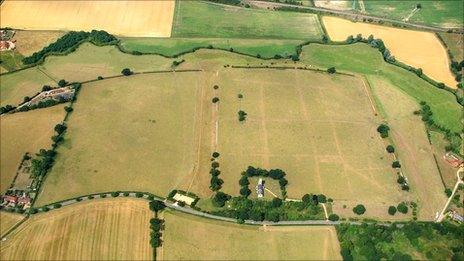Norfolk garden exploration at Caistor reveals ancient coins
- Published

Experts hope to find evidence of the Iceni town or a Roman military camp at the Venta Icenorum settlement in Norfolk
Coins from the 1st and 2nd Centuries are among finds by archaeologists in gardens near a Roman town in Norfolk.
Dr Will Bowden of Nottingham University is trying to identify the settlement as a market town or an armed camp and said evidence indicates it could be either.
The Latin town name Venta Icenorum, external at Caistor St Edmund, near Norwich, is translated as the market of the Iceni, the tribe that lived there, he said.
The modern name Caistor comes from the Latin Castrum, a military camp.
Experts have been digging test pits in gardens of the modern village.
Evidence has already been uncovered that shows an early Iron Age town well beyond the protective walls of the known Roman settlement.

Dr Will Bowden said he was reasonably confident the site runs substantially to the north of what is thought to be the archaeological site of Caistor
Dr Bowden, working with the Norfolk Archaeological Trust. said: "Most Roman towns were built up on existing Iron Age settlements or were newly established military centres.
"Our surveys have shown defensive ditches enclosing a much larger area than is covered by the street grid of the Roman town.
"This indicates the earliest nucleus of the town extended to the north and is under parts of the modern village."

Archaeological evidence shows a "kite shaped" defensive ditch extends beyond the current Roman town. Crop-mark data is copyright of the English Heritage National Mapping Programme licensed to Norfolk County Council
Dr Bowden said the Iceni occupied most of Norfolk and parts of Suffolk and Cambridgeshire so this town was in the heart of their territory.
The digging is going to continue to get an insight into the life of the town both during the Iron Age and after the Roman occupation.
Dr Bowden said: "Often in test pits very little is found but in Caistor we have found coins and pottery from as early as the 1st Century AD.
"This has been quite exciting for us and the villagers who are discovering archaeology in their own gardens."
- Published23 August 2014

- Published12 September 2012
.jpg)
- Published15 August 2011

- Published8 July 2011
